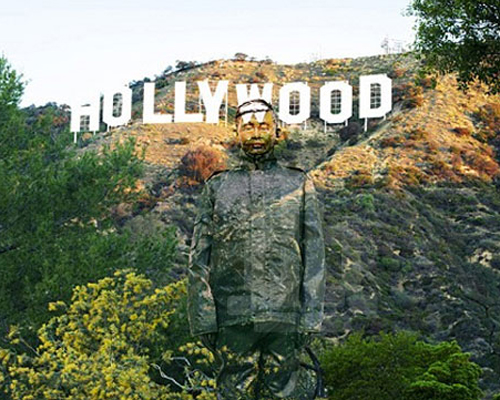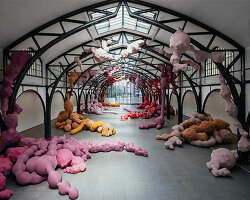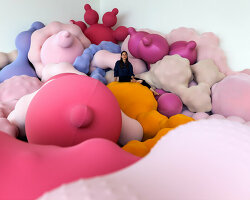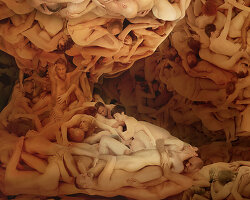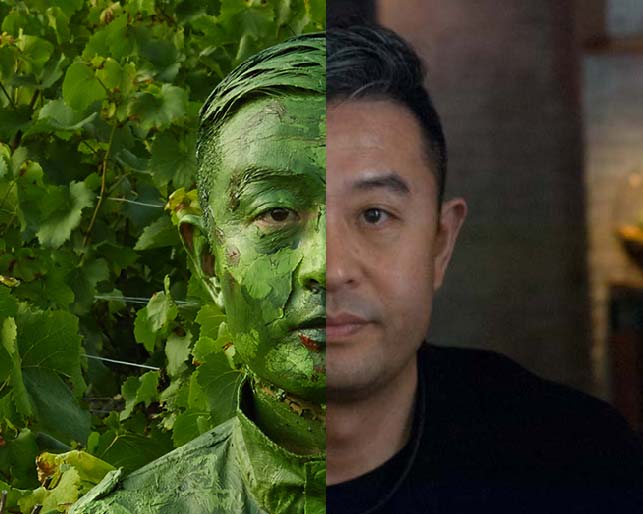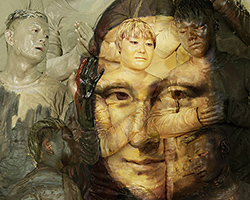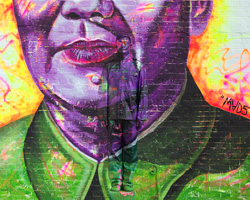liu bolin, JR through the eye of liu bolin, 2012
photograph, 57 1/2 x 78 3/4 inches (146 x 200 cm)
all images © of the artist / courtesy of eli klein fine art
liu bolin: mask
eli klein fine art, new york
on now until july 21, 2013
chinese artist liu bolin returns to new york’s eli klein gallery with ‘mask‘, a multifaceted exhibition that features new photographs of bolin camouflaged in iconic settings across new york and california as well as a series of sculptures that offer a critical take on traditional peking opera masks.
the photographic works include not only new pieces in bolin’s ‘hiding in new york’ project (first begun in 2011) but also a new series entitled ‘hiding in california’, that finds the artist nearly invisible against the backdrop of the TED talks stage and hollywood sign among other landmarks.
bolin’s complex critique of contemporary culture continues with a sculptural exploration of peking opera masks, which traditionally served as symbolic depictions of chinese society and its values. the artist recreates these artifacts, this time featuring soda labels and other consumer advertisements rather than heroes and gods on their faces, as he addresses the very commercialized nature of contemporary life in china. the layering of welding masks onto the sculptures reminds viewers of the near-constant danger that food and drink contamination poses in the country.
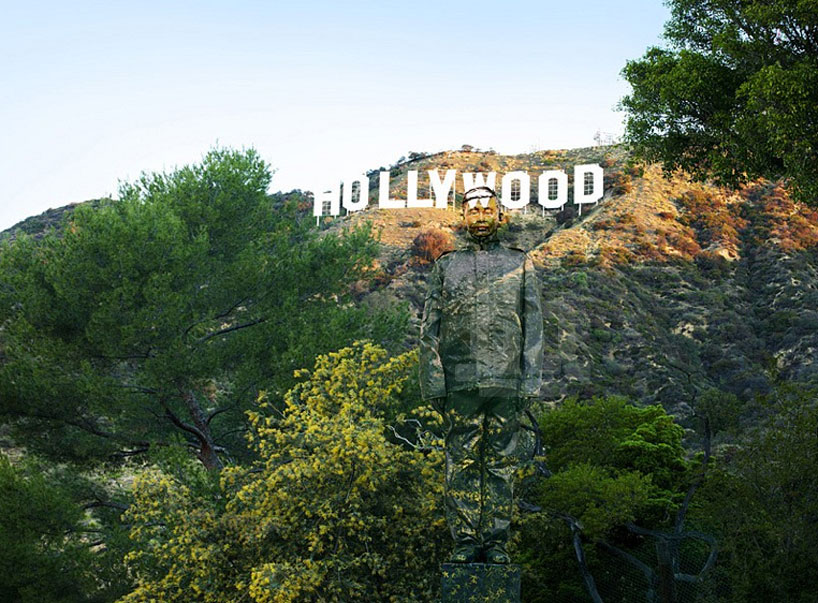
liu bolin, hiding in california no. 2 – hollywood, 2013
photograph, 44 1/4 x 59 inches (112.5 x 150 cm)
designboom (DB) spoke with liu bolin (LB) in new york.
DB: how do you choose the sites that you will be camouflaged into for your photographs?
LB: background is very important in my art works. background and the ‘invisibility’ that I design together create a kind of contradiction, not unlike the contradiction of birth and death. this kind of contradiction is enticing: people who follow my work always pay attention to the relationships between the contradictions as a symbol of what it means to be human. in the beginning of my artistic creation, I chose some sites in china– for example, forced demolition houses, trees that were cut down, dry river-bed, and some big character slogans– these are very chinese.
I think I put my thinking of the whole of society and my view of the entire world into my artworks. for example, [in new york] I choose some sites like the Wall Street Bull. as an artist, I’m not really concerned about economics or stocks, I’m very ignorant, but the Wall Street Bull represents Wall Street. it means that everyone wants a bull market, hopes that share prices will rise and rise, but as a result, under the influence of the subprime crisis, the economy began to crumble. from the view of an artist and myself, I just try to interpret and look at the world.
DB: do you feel different when you are camouflaged?
LB: in the process of ‘invisibility’ I have a kind of persistence, even just the fact that I must stand and can’t move. actually, this persistence has some connections with the struggle to life as a human being and an individual. I should say that, actually I have another process [in addition to being painted]: that is preparing my clothes. ideally all the preparation should be made on my body, but if there are two many details and I would need to stand there for two days, my body can’t take it.
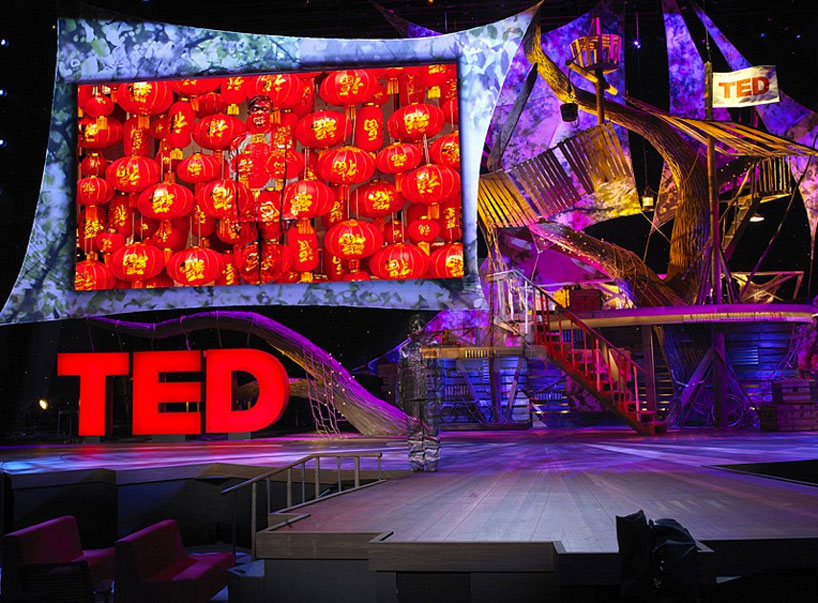
liu bolin, hiding in california no. 1 – hollywood, 2013
photograph, 44 1/4 x 59 inches (112.5 x 150 cm)
DB: speaking of which, what is the longest time it’s taken for you to be camouflaged for one of your works?
LB: the longest time I stood onsite was a whole day. I can’t stand longer. even after that, I couldn’t take off my rings and watch, my body felt frozen stiff. but that was also in the beginning: I had no experience and didn’t know how to protect myself.
DB: in your recent piece ‘JR through the eye of liu bolin’, we see you incorporating the work of another artist in your art. is this an avenue you’ll continue to explore?
LB: first of all, I really like JR’s work, and he likes mine. he knew my works before he knew me, and the same for me with him. I like his concept of paint– it’s very modern– and his focus on contemporary society. he amplifies ordinary people to become superstars, and this is very important work and thinking in today’s society. my association with JR is something like a canal that is formed when water comes. we come together and have fun! whether there will be further collaboration in the future, I’m not sure. maybe I will meet other favourite artists of mine, next month or next year, who knows?
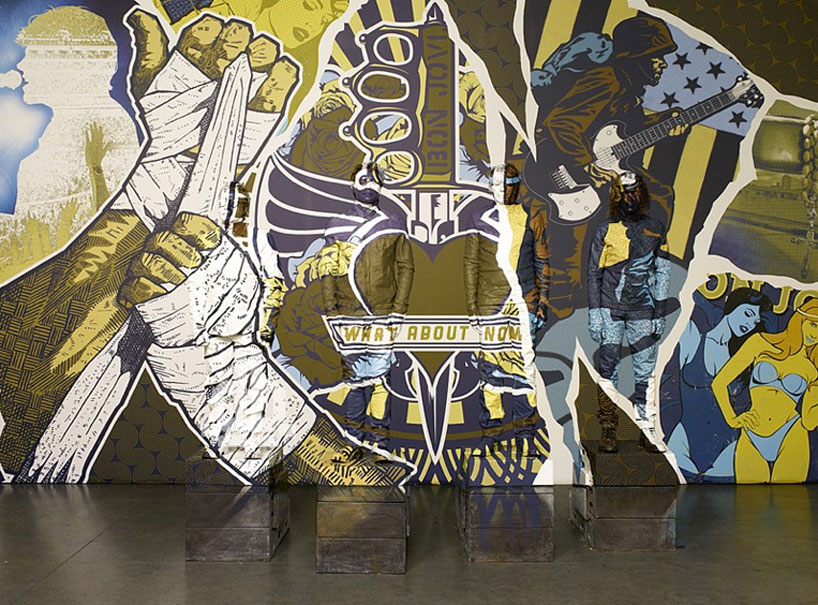
liu bolin, bon jovi, 2012
photograph, 44 1/4 x 59 inches (112.5 x 150 cm)
DB: what does ‘invisible’ mean to you now? has the idea behind your art evolved since 2005 when you first started exploring this concept in some of your works?
LB: yes, from two points of view. first of all, it shows a transformation of my personal focus. in the beginning, my work was about resistance. because the government shut down my studio, I expressed my resistance and made more people pay attention to this problem. I finished some works, which included big character posters and policemen, because I had an exhibition demolished. at that time, there was only myself. then I started to think: ‘it’s not just me, this will happen to all society, to the whole of china and to all chinese people.’
in addition, slowly over time I had the chance to go abroad. when I was in paris, I saw something very impressive: an archive, all of the marriage certificates of parisians from over 500 years, all stored in this archive from generation to generation. when eastern and western culture collide, you really are lost in admiration; it makes you feel very small. subconsciously I told myself: you have your position, don’t worry; you’re a chinese artist, you have your place; but I wonder why we don’t have that history. it feels unbalanced. when I go to western countries or europe, I put myself in the middle of east and west. we all have different starting points.
DB: … and the second perspective?
LB: well, on the other hand, from the view of chinese tradition, my concept is about the most important chinese concept: taoism’s ‘unity of man and nature’. after these four words, I don’t need to say too much. digging deeply into the root of my works, I bring traditional chinese philosophical thought to life. when I record the detail of things happening in my daily life, I also develop the chinese traditional philosophical spirit [in myself], from my perspective.

liu bolin, hiding in new york no. 6 – intrepid, 2012
photograph, 44 1/4 x 59 inches (112.5 x 150 cm)
DB: what is the best moment of the day for you?
LB: work. when I am working, I feel relaxed. I can display and exert myself.
DB: what are your fears regarding the future?
LB: fear? (laughs) I’ve never thought about it. (pauses) I think, I am just beginning now, and I muster all my strength to rush forward. if I were afraid, I would never have made it this far. I’m not scared of anything, don’t worry.
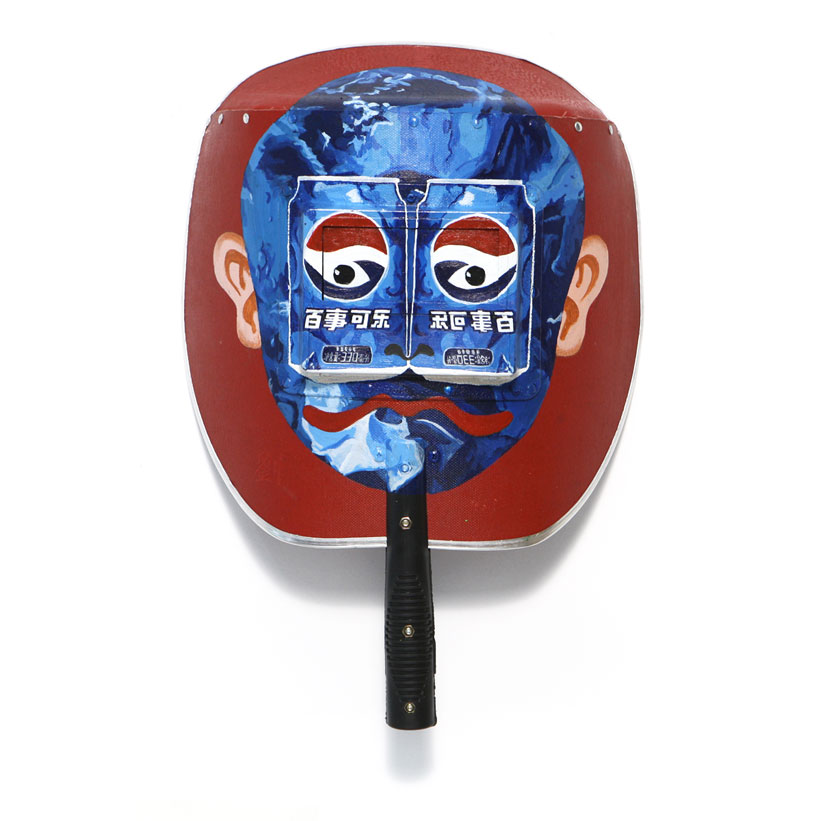
liu bolin
mask no. 9, 2013
acrylic on glass, plastic vulcanized fibre
40 x 25 x 15 cm
DB: so what advice would you give to the next generation?
LB: can I answer the question specific to the chinese next generation and artists?
DB: of course.
LB: the reason why I ask is because I don`t know the environment and artists’ conditions in foreign countries, so I only dare to say something regarding to these things which I more or less know about. if I don`t know, I dare not answer.
I have two points of view: for young people, especially in china, don’t listen to your parents! (laughs) second, as an artist: every parent hope you will be like him or her, but if so, you don’t have your value: your value is that you are not the same as them. so don’t listen to your parents! (laughs)
seriously, for artists, my advice is really to open your heart, face the world. so that you really understand the world. when I talk with some chinese artists, they feel innovation is really difficult. in fact, if you really open your heart to feel this world, it’s not necessary to innovate. use your heart to feel the world, then release yourself. that’s enough. naturally, you will create new artwork.




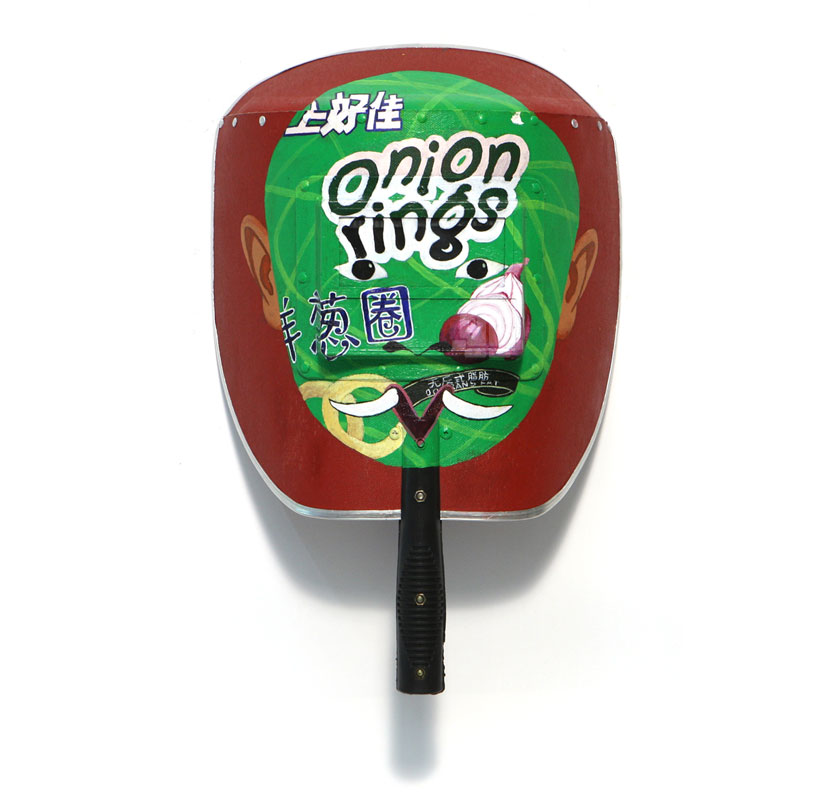
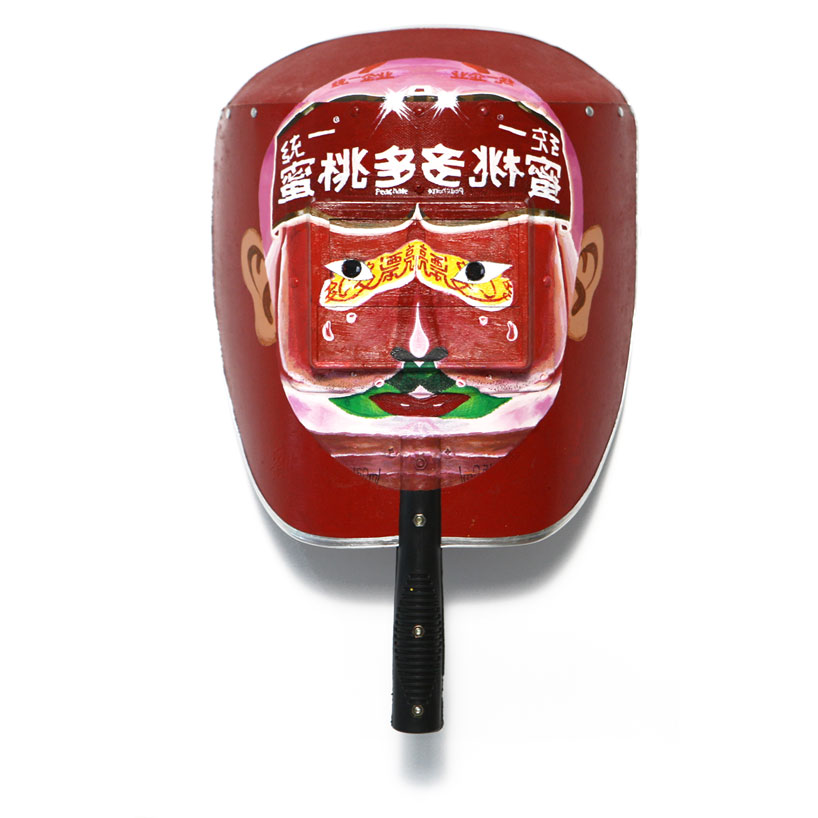
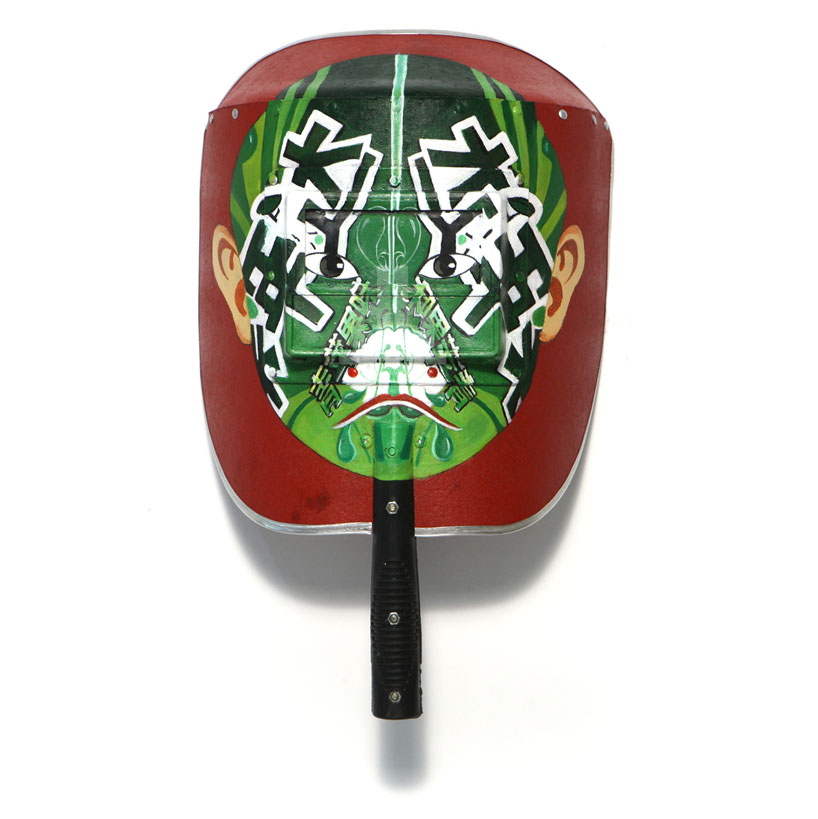
body art (91)
liu bolin (12)
PRODUCT LIBRARY
a diverse digital database that acts as a valuable guide in gaining insight and information about a product directly from the manufacturer, and serves as a rich reference point in developing a project or scheme.
